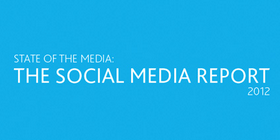The Value of Music in the Digital Age
Music is full of value, emotions and people LOVE listening to it everyday. It has become so much available that every person has a personal soundtrack now. Take a walk and you’ll see how many people listen to music while jogging, commuting or having a break from work. If you don’t see the signs, just check out some research conducted byHeartbeats International. And that’s great. Music is the fuel of life and we all know it.
However: the fact that it becomes abundant makes it more and more difficult to sell ‘music’ as a ‘product’. And if you cannon sustain something commercially and re-invest in its creation, it eventually faces decay.
Before we had CDs, vinyl, even cassettes, which were tangible objects to sell. You could do stuff with them, touch them, break them, gift them. Tangible objects are valuable for people, because they’re scarce.
What about digital?
A digital file or a streamed song are intangible. They’re music stripped to the bone. And they become more and more easy to have access to. Marginal costs for duplication are zero, which enables them to spread faster than ever without any surcharge for the creator. Something impossible by definition for a tangible product.
Along with the format, the perception of people for the value of digital music, thus music in its most popular form, has changed radically. ‘No cost to duplicate and spread, free feels right’, is a common argument, supported by the notion that ‘everybody’s doing it’.
One thing’s for sure. Gravity is changing and digital Mp3s cannot be considered to be the successor of the CD and vinyl empire. It’s just different. Culturally and practically.
But good music is notorious to produce and definitely not costless. It requires various arrangements, time and people to produce, execute and promote. And it’s cost is far from zero, opposed to the general perception, especially from the so called ‘digital natives’.
Considering the aforementioned parameters, if you want to make a living from your art, you need to ‘add value’ to your music. And by saying ‘add value’ I mean ‘add scarce value’.
Here we go, that’s a key insight you have to nail down in your head. I’ll be honest, the idea stuck in me after reading a piece from Mike Masnick’s Techdirt.
Music is valuable for triggering emotions and shaping our mood, but the market laws are different. There’s no silver bullet on how to add scarce value to a musical composition in order to make it marketable. There’s a yet unexplored territory though, and it lies in the power of perception. Brands resist commoditization by skillfully adding value to what they offer, changing people’s perception. In other words…
Enter Premium
I’ve been researching the issue lately, and I could understand why most musicians still believe vigorously they play the $ .99 game. Damn, you need to sell tons of those digital tracks to make a proper living. Almost impossible for a small niche musician.
I’m on the opposite side: sell a few and expensive. In other words: premium.
The idea of premiumization in music came up when I first encountered and collaborated with a founder of a food luxury brand.
Changing the perception about food and turning it into a luxury product that targets a small group of people was something fascinating and difficult for me to process in the beginning. Food is a commodity, something we cannot live without. Restricting food to increase its market value would be disastrous for human beings and wouldn’t make sense.
Now, where you see ‘food’, think ‘music’. It’s almost falls into the same mindset. Which means that, if food can get through the process of premiumization and obtain added value, the same is possible for music as well.
This way, music can be sold in the form of a product or experience that has value for the market and the people.
On my way to specify ‘premium’, I came down to the following characteristics. While reading the following paragraphs, open your mind and think of products that could combine these ‘anti-marketing laws’.
A premium product is scarce. There’s no abundance of it.
A digital download can be copied infinite times. It’s not premium. Can’t charge a lot for it. Races to the bottom prices.
In other words, if anyone can have it, why pay a lot for it?
An experience, on the other hand, is limited. You can’t experience the same concert twice. Once you’ve missed it, it’s gone. The same for handmade products (more on that later).
A premium product is unique.
Where unique I mean ‘exceptional quality not commonly found’. If you offer something crappy in limited edition, I don’t think it helps the value to rise.
What you offer has to be exceptional and unique. Something that people will definitely talk about.
Think of a Rammstein show, the Bum Bum Train, Cirque De Soleil and Matchboox. All of them are unique. I doubt there can be someone to copy what they offer.
The more automated the creation, the less valuable the product.
What does a newspaper, a stamp t-shirt, a blog feed and a MacDonalds burger have in common?
You guessed right – the procedure of their creation is heavily automated. And the more automated it becomes, the more the costs drop – the more the profit for them grows – the less valuable the product becomes for you. That’s why you’ll never really appreciate them and pay for more than the price. You’ll always look for cheaper alternatives, if possible.
What you’re looking for yourself is to invest some time in slowing down the procedure of creation. YES, that’s right. Slow down the creation. Put your personal touch in it (go handmade), put real (not cheap) materials in it, provide a twist and flaws that robots can’t.
That’s why it’s real, because it has flaws.
A premium product is difficult to create.
If you watch a show and then go home and prepare to do the same with your band, then the show was not really that worth paying for.
In general, the more difficult it is to create something – so not many can copy it – the more valuable it becomes.
Next time you think of watering down the experience of your act for the sake of ‘easier execution’, think about it twice. Easy-to-do things are me-too things that never impressed anyone.
Personalization is turning an ordinary product into premium.
Why would you pay more for a signed CD? It’s the same material. Because of the signature of course. Personalizing something can make people go far to purchase something; and pay premium of course.
That’s why a simple video or card for someone’s birthday (with his name in it) can be appreciated much more than any other expensive-to-impress generic gift.
We always want to feel one-of-a-kind and the sound of our name is the sweetest sound we can hear (they say). Invest on those principles and you won’t lose.
A premium product can never be discounted.
You always get what you pay when you buy a premium product. You can never give it away for free, and under no circumstances you give it in discounted price. You don’t create it to ‘sell out’, but to make the people who purchase it feel special and lucky to have it.
Research has shown that the more you raise the price of a premium product, the more demand it created. Likewise, a discounted price could drop the sales – and the value of the product itself!
So, beware.
A premium product carries some weird energy around it…
…similar with the one that symbols carry. Why do you feel proud riding a Harley and not just any motorcycle? Why do you want to have a Gucci instead of a Zara? You know why. Because of the vibes and prestige they convey.
I could safely say that a premium product could be turned into a symbol far easier than an ordinary product. It’s the perception, stupid.
It’s how the product makes you feel, not what problem it solves.
Emotionomics here.
When we buy an ordinary product, we tend to compare it with others from the same category to find the best solution for us. This is the way it’s marketed. They solve problems. We use the left brain hemisphere, the reason.
When we buy a premium product, we choose on how it makes us feel and how unique it is. It’s marketed by triggering people’s emotions. We use the right, artistic hemisphere.
That’s why we pay a lot for it, we don’t really use the reason within us 😉
A premium product is difficult to get.
You know what BAPE did? They hid their stores in small alleys without any signs on them, they gave only one pair of shoes to each buyer, once they were sold out, they were gone forever, their website was functioning only if you had downloaded and run a special .exe file.
Pain in the ass? Yes. People loved it. And the owner became rich.
The more you make people chase you for a purchase, the higher the value of your product goes. It’s like you state “I’m not desperate to sell you the product, I know its worth and YOU’ll come to me, not vice versa”. It shows confidence.
Think of a chick. Sex on the first date? Hmmm…
Via Music Think Tank






